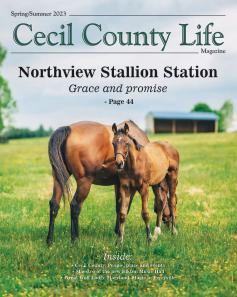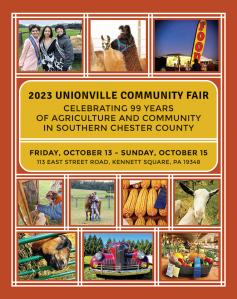












































































































The University of Delaware can trace its history back to 1743, when the Rev. Francis Alison, a Presbyterian minister, started a school in his Chester County home. It moved to Newark in the 1760s, and the school remained small for a long time—enrollment didn’t top 1,000 students until 1946. Today, the University of Delaware’s impact, near and far, is enormous—the school trains 23,000 students in 150 majors and minors, supports 80 research centers, and employs 4,700 people at 12 sites around Delaware. There are more than 200,000 University of Delaware alumni around the world, including Joe Biden, the President of the United States. In this issue of Newark Life, writer Ken Mammarella presents a story about the University of Delaware you don’t know, with lots of interesting facts and figures about the school.
This issue of Newark Life also looks at the efforts to make the City of Newark more friendly for bicyclists. The city has already earned first a bronze and then a silver in bike friendliness from the League of American Bicyclists. Now, bicycling advocates are going for the gold.
At the beginning of the 2024-25 school year at The Independence School in Newark, Head of School Timothy Costello gave each of the school’s teachers the gift of a wand – a deferential nod to the magic of education and its ability to inspire others. Recently, Costello met with Newark Life to talk about the school’s mission, its curriculum and who inspired him.
In this issue, we also profile award-winning professor Wendy K. Smith, who worked with Marianne W. Lewis, dean of the University of Cincinnati’s Lindner School of Business, to earn an award for their research on business and life paradoxes. Their research was also popularized in Both/And Thinking: Embracing Creative Tensions to Solve Your Toughest Problems, a lively and approachable book that was published in 2022.
In our photo essay, we highlight the good work of PAWS for People. For the last 20 years, the organization has been committed to providing therapeutic visits to people and communities who benefit from interaction with a welltrained, loving pet.
The fall is a great time to enjoy fun activities, and in this issue we offer a look at the great mix of events and activities, including some spooky ones, that can be enjoyed in and around Newark over the next few months.
We hope you enjoy the stories in this issue, and we welcome your comments and suggestions for stories to be included in an upcoming issue of Newark Life. We look forward to bringing you the next issue of Newark Life, which will arrive in the spring of 2025.
Sincerely,
Avery Lieberman Eaton averyl@chestercounty.com

Stone Lieberman stone@chestercounty.com
Steve Hoffman, Editor editor@chestercounty.com
Cover design: Tricia Hoadley
Cover photo: Jim Coarse
By Ken Mammarella Contributing Writer
When Bob McBride moved to Newark as a University of Delaware student in 1970, biking was “slightly difficult,” he recalled, citing minimal infrastructure for bicyclists and bicycling.
“We had to invent a lot of things,” he said. “We had to invent good lights for the bikes. You couldn’t get good clothing for the winter, so you had to invent and create a lot yourself. And we tried to be very creative about choosing routes that weren’t too busy, which was a difficult thing to do.”
Although he relied more upon walking to get around campus as a grad student, he biked to work in New Castle and Wilmington, as long as he didn’t have to cope with driving rainstorms or icy roads.
Fast forward several years and the entire scenario for local bicyclists has changed dramatically. Newark has earned first a bronze and then a silver in bike friendliness from the League of American Bicyclists, and advocates are going for the gold.
The advocacy is championed by BikeNewark, which McBride heads. The nonprofit partners with the city, UD,
the Delaware Department of Transportation, the Wilmington Area Planning Council, the Newark Bike Project (a community repair shop), Delaware Greenways and Bike Delaware.
“We have leveraged a lot of citizen brain power and fundraising efforts to develop and assist the city of Newark and DelDOT in making room for bikes in the transportation system,” he said.
From co-founding the White Clay Bicycle Club in the 1970s to later racing competitively and today having 10 bikes in his Nottingham Green house for family members and visitors, McBride is dedicated to bicycling as a sport, a hobby, a commuting vehicle and a way of life.
“Bicycling is something I enjoy doing, and I enjoy being with people who enjoy doing it,” he said. “It’s a very positive group of people who bicycle long distances. Many do it for exercise and competition, but most do it because they think it’s a good thing for the planet and for ourselves. A lot of us are really focused on making it a friendlier place for bicycling because it’ll ultimately be friendlier for the planet. It takes less resources. And it’s a lot safer than motor vehicles.”
Continued on Page 12

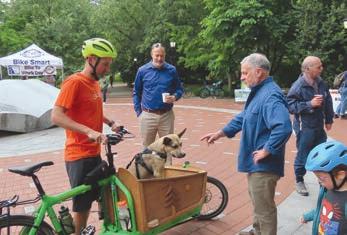
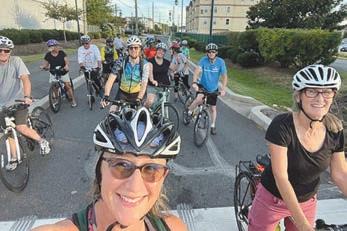

Continued from Page 10
The league focuses on five criteria, all starting with the letter e: engineering, education, encouragement, equity and evaluation. BikeNewark espouses those criteria, and McBride said that more education will be key in moving up the rankings. Here are his top three educational tips:
• “Do you know what you should do to make sure your bike is safe when you leave for your destination? That would include a brief physical inspection of all the mechanical devices and whether you have the appropriate tools with you to fix it if you need to. In the summer, you need water for hydration, and protective glasses so that you don’t get bugs in your eyes, as well as a helmet. Those tools include whatever you need to fix a flat and to put the chain back on your drive system if it drops off.”
• “Choose your route for the lowest possible stress. It may not be the shortest route, but it may improve the quality of your ride and make it safer for you. Stress is another way of referring to how bike-friendly a route is. Low stress would be where you let your 12-year-old ride.”
• “Always have a person who knows when you are leav-

ing and when you are arriving. Don’t go off by yourself. I recommend that people have ID tags or an ID service or the newest smartwatches that work in conjunction with your phones to alert people if you have an emergency or an accident.”
Of course, safe bicycling involves more than three tips. The best clothing is something bright during the day and something reflective at night.
Bicyclists obviously need to worry about motor vehicles, especially when they’re riding on narrow shoulders, when they’re crossing roads and when they’re in parts of the roadway where drivers are merging on or off the road.
“A high-stress road would be most of our roads in Delaware that have numbers,” he said. “Route 896 and Route 13 – all these are high-stress routes because the traffic is fast. The space along the shoulders is minimal. And the danger is in
Continued on Page 14

maps out where bicyclists are welcome (and less so) in greater Newark. The annotations show the most recent progress and future goals.


Continued from Page 12

crossing. Crossing a highway like that has been involved in almost all pedestrian and bicycle fatalities in Delaware that we have studied.”
Bicyclists, just like drivers of motor vehicles, should not be distracted by earphones, earbuds, texts, alcohol and other mind-altering substances.
And bicyclists should also be on the alert for animals, McBride said, citing his own collisions and near-collisions with dogs, pigs and deer.
Municipal plans to encourage bicycling in Newark go back to at least 1973. In 2010, the city earned a bronze award from the league for its efforts, which included adding bike racks to DART and university buses; creating the Newark Bike Project; and improving bike routes.
BikeNewark evolved about a decade ago from the Newark Bicycle Committee, which was technically a municipal committee, said Mark Deshon, who was chair at the time. Biking “has improved tremendously” in the last half-dozen years, he said, particularly with the creation of the Pomeroy and James F. Hall trails, which form about half of the important Central Loop around downtown.
“Those two began the real facility in being able to bike in and around Newark,” he said.
Continued on Page 16

Continued from Page 14
The Central Loop was completed when DelDOT, while working on Delaware Avenue, created a two-way track along Delaware Avenue from Library Avenue to Orchard Road.
Newark in 2023 became Delaware’s first city to earn a silver status, and only 41 communities nationwide boast the higher statuses of gold and platinum.
“To encourage the higher rating,” WILMAPCO wrote in a recent newsletter, “the League of American Bicyclists recommended increasing Newark’s focus on safety and equity, reducing residential speed limits, expanding school education programs, increasing secure bike parking, encouraging local businesses to promote bicycle and exploring public bike-share.”
“There’s been an important switch in public policy in the U.S. for providing bike facility in the last 10 years,” said Rodolfo Gomes De Oliveira, a BikeNewark member who just earned his master’s degree in civil engineering from UD and has hopes to commute by bike and bus to his job at DelDOT. “Biking can be pretty comfortable downtown,

but Elkton Road and Kirkwood Highway can be traumatic,” he noted, recalling his first eight months in Newark relying upon a bike to get around.
Newark’s nature – 8.9 square miles, with all residential areas within a 2.5-mile ride of Main Street or UD’s main campus – makes bicycling “a practical option for local trips,” a 2014 report wrote.
BikeNewark is much more than a club that unites bicyclists, McBride emphasized.
Accomplishments for 2023 listed on its website (bikenewark.org) include the first Newark Family Bike Fest, more signage, wayfinding kiosks, a safety handout, four bike-safety checkpoints, a Bike to Work day and five First Friday rides. Wayfinding is all about creating signs that show the mileage and directions to key destinations.
Continued on Page 18






Continued from Page 16
Goals for 2024 include assessing bike parking, completing the Newark Bikeways and wayfinding signage, assisting in updating Newark’s bicycle plan and creating publications and videos to showcase its accomplishments.
BikeNewark has annotated its Newark Bikeways maps to show recent progress and planned projects, such as work on Wyoming Road and the Emerson Bridge on Paper Mill Road.
Deshon called the bicycle-pedestrian path being built above Interstate 95 along South College Avenue “a big improvement,” adding that it will “point out a glaring missing link regarding the lack of low-stress connectivity from I-95 to the James F. Hall Trail and north all the way to East Main Street, which we hope will be addressed.”

















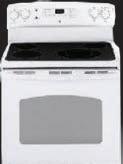








By Ken Mammarella Contributing Writer
The University of Delaware traces its history back to 1743, when the Rev. Francis Alison, a Presbyterian minister, started a school in his Chester County home. It moved to Newark in the 1760s and went through various names until being chartered as Delaware College in 1843. The college

closed in 1859 and reopened in 1870, after it was designated Delaware’s land-grant university. It remained small for most of its history: Enrollment topped 1,000 only in 1946.
UD today trains 23,000 students in 150 majors and minors; supports 80 research centers; and employs 4,700 people at 12 sites around Delaware, including 340 buildings on its main campus.
Let’s go behind the scenes of Blue Hen country.
The University of Delaware has been a fixture of Newark for more than 250 years.

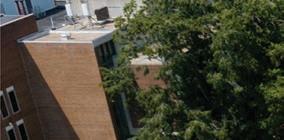

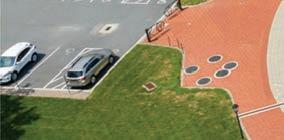


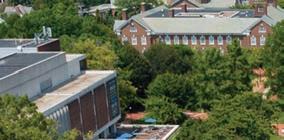








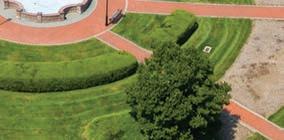
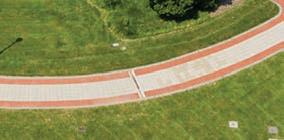





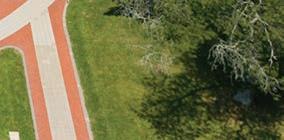


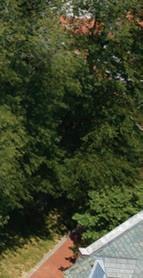

The first students at the first predecessor to the University of Delaware were a homogenous bunch: young, male, white, probably Presbyterian.
In 1843, when Newark College was chartered, the youngest student was 9, and the average age was 14.Francis Alison was a Presbyterian clergyman who founded the earliest school that UD traces its history to, and Presbyterianism was the dominant faith in New Castle County.
The first women were admitted in in 1872, and until 1948, only one AfricanAmerican had earned a degree from the university.
The trustees in the 1820s and 1830s “never ceased advertising the good reputation of Newark for both health and morals,” John A.Munroe wrote in his history of UD, with their ads proclaiming “the absence of ‘temptation to vice and extravagance.’ ”

Today, the university now enrolls more female students than male students, and about one-third of the undergraduate population is not classified as white. In addition, the number of food options in Newark have
dramatically increased.
Time, however, doesn’t change some things. There was a staffing shakeup in 1835 to resolve complaints of “incredibly bad food,” Munroe wrote.
Continued on Page 22
Continued from Page 21
These terms come from John Munroe’s The University of Delaware: A History, a Facebook post asking people to chime in and additional research. Like fame, campus and off-campus slang is fleeting.
Balloon shoes. Shoes sacrificed to hit the Stone Balloon, a Main Street bar. “The floor was so nasty from all the beer spills, etc., it looked like you had been walking in mud,” a Facebook user posted.
The Bob. The Bob Carpenter Center, a 5,000-seat arena on the south campus. The Lil Bob is the Carpenter Sports Building, on the northern end of the main campus.
Campusing. Restricting Women’s College of Delaware students to campus, the worst punishment for breaking the rules, which included getting clothes and makeup approved before attending a dance.
Dink. A class beanie. For at least several decades, UD freshmen were required to wear their dinks and name badges at all times on campus, attend all pep rallies before football games and follow other policies, such as not walking on the

grass on the Green. These “rat rules” were “meant to create a class and school spirit,” the University of Delaware Archives and Records Management wrote in an exhibition on student life.
“Fear the Bird.” A warning to opponents of Blue Hen teams. Got Katie. A reprimand for rule-breaking. From the 1850s.
Habitrail. The pedestrian overpass over South College Avenue, from when its design resembled a brand of hamster cages. It is also referred to as The Gerbil Tube.
Harrington Beach. The area behind the Perkins Student Center near the Harrington Hall residence hall – a popular spot for volleyball and sunbathing for students.
Kissing arches. For decades, romantically inclined UD students have heard (and heeded) the tradition that couples will be blessed with marriage if they kiss five times beneath the triple brick arches adjacent to Memorial Hall.
The Green. The grassy area between Memorial Hall to Main Street, which was once called The Mall.


Mid-flopper. A student who flattered a professor for a better grade. From the 1930s.
Pencader Hills. A measure of stamina, in the number of times a students went uphill between the main and north campuses. Reduced since a bridge was built in 2005-06.
The Rodjects and Dickinslums. Student slang that referred to the now defunct Rodney and Dickinson residence halls that once stood west of South Main Street.
The Scrounge. A place to get food and drink, first in the 1940s as a coffeeshop and soda fountain in the basement of Memorial Hall, then expanded in size and menu at the Perkins Student Center.
Skid Row. Eight row houses on Academy Street, north of Delaware Avenue, with a nickname earned for their “unkempt appearance and the wild behavior [they] seemed to attract,” dirtAmerica.com wrote. They were added to the National Register of Historic Places in 1982 as a “novel example” of downtown rental housing built mostly of wood.
Topsy, Turvy and Boletus. Temporary dorms for women built in the 1920s.
Traying. Using cafeteria trays to go sledding.
Wilburfest. A block party, heavy on beers and bands, along Wilbur Street, from the 1970s to the 1990s.
“Yes,” Laure Bachich Ergin, vice president and general counsel for the University of Delaware, joked at a 2020 Delaware Legislature committee meeting. “We are a private corporation. But we’re not like other private organizations,” delawareonline.com reported. “We have lots of characteristics that make us sound like a public institution.”
Those characteristics include getting funding from the state, prioritizing enrollment for Delawareans and considering the needs of Delaware when developing programs.
“UD points to its charter as evidence that it is a ‘privately governed, state-assisted university,’ ” the article continued. That’s a phrase that Google can find for only one other university: Washburn University in Kansas, whose website notes it also receives funding from city and county taxes.
Here’s why the distinction matters: UD gets money from the state, and it must tell the state how it spends that money, but it can be private about its other spending, funding and other activities.
Its charter says the board of trustees has “entire control” of the university. For instance, salaries (largely) “do not have to be reported or justified” to the state. Ditto for tuition and fees.
That said, the university offers cheaper tuition to Delawareans, and it’s easer for them to get in.
Continued on Page 24

Continued from Page 23
Hugh Rodney Sharp was “the greatest benefactor the college has ever known,” University of Delaware professor John A. Munroe wrote in his history of UD.
Sharp (known also as Rodney or H. Rodney) was one of 18 students in the class of 1900, and after graduating at age 20, he began working for the DuPont Co., married a du Pont and also helped steer gifts from his brother-in-law – Pierre S. du Pont , of Longwood Gardens fame – and other du Ponts to UD. Sharp was a member of UD’s board from 1915 to his death in 1968.
As depicted in her book Familiar Relations: The du Ponts and the University of Delaware, author Carol Hoffecker

wrote that Sharp’s legacy includes shaping UD’s “internal values” and these physical items:

• Sharp also led the effort to grow Delaware College south from Old College to the Women’s College of Delaware. “He aspired to create the most aesthetically attractive and compelling vista anywhere in the state,” Hoffecker wrote. That included buildings in the Colonial Revival style; landscaping by Marian C. Coffin, who helped design the gardens at Winterthur; and the brick wall that girds the main campus.
This alumnus, who graduated from the University of Delaware in 1900, is considered by one UD historian to be UD’s greatest benefactor.
• Sharp was instrumental in bringing Mitchell Hall to the university; naming Harter and Wolf halls after his favorite professors; and leading a campaign to add a Georgian portico to Du Pont Hall, to better match nearby buildings. Sharp also



gave the university $200,000 to buy Newark Presbyterian, incorporated later into the Trabant Student Center.
• In total, Sharp endowed $58 million to the university through the Sharp Trust.
As thanks for his gracious deeds, the university named a residence hall after Sharp and created Rodney Sharp professors and scholarships. The Hugh R. Sharp Campus in Lewes is named for one son, and Bayard Sharp Hall is named for another of Sharp’s sons.
It’s the First State. What’s UD first in?
In her book Familiar Relations: The du Ponts and the University of Delaware, author Carol Hoffecker wrote that the university has three “firsts”:
• In 1923, it became the first U.S. college to offer a study abroad program, thanks to the zeal of French professor Raymond Kirkbride.
• In 1952, it began the nation’s first master’s degree oriented toward museum studies, in cooperation with Winterthur.
• In 1967, it began the nation’s first doctoral program in art conservation, again with Winterthur.
Continued on Page 26

Of the more than 200,000 University of Delaware alumni around the world, it’s a highly subjective exercise to rank the most famous.
Its Alumni Wall of Fame, for instance, “recognizes outstanding professional and public service achievements” by 300 graduates. Wikipedia lists almost 250 alumni with individual entries.
A few websites – such as ranker.com, thefamouspeople. com and edurank.org – offer shorter, ranked lists. Search engines and artificial intelligence come up with different rankings, but some of those in this list trained, studied or performed at the university but are not considered alumni of the school.
I considered all these lists and my own perspective as an alumnus to come up with this.
1 Joe Biden. The current U.S. President (1965 bachelor’s, double major in history and political science, and a 2004 honorary doctor of laws) has lent his name to the Joseph R. Biden Jr. School of Public Policy & Administration and the Biden Institute (chaired by his sister, Valerie Biden Owens, a 1967 graduate given her own honorary doctorate of laws in 2018). Other notables in politics include First Lady Jill Biden (1975 bachelor’s in English); Delaware Gov. John Carney (1986 master’s in public administration); former New Jersey governor and presidential candidate Chris




Christie (1984 bachelor’s in political science); U.S. Sen. Tom Carper (1975 MBA); U.S. Rep. Lisa Blunt-Rochester (2002 master’s in urban affairs and public policy); Steve Schmidt (2013), a Republican strategist and manager for John McCain’s 2008 presidential campaign; and David Plouffe (2010), Democratic strategist, manager for Barack
Obama’s 2008 presidential campaign and a 2024 campaign adviser to Kamala Harris. Yes, Schmidt and Plouffe finished their degrees after working in politics.
2 Robert W. Gore. In 1969, while working at a company founded by his parents, Gore (1959 bachelor’s in chemical engineering) developed expanded polytetrafluoroethylene, which led to Gore-Tex fabric, the world’s first breathable waterproof fabric. He held nine patents, and his inventions led to materials used in spacesuits, medical devices and other applications. Sally Ives Gore (1976 master’s and 2023 honorary doctorate in humane letters) is his third wife, and she focuses her philanthropy on women.
3 Elena Delle Donne. The basketball player (2013, human services) has followed her record-breaking performance at UD with an impressive career as a 2016 Olympic gold
Continued on Page 28
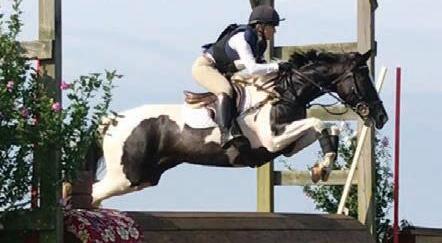


Continued from Page 27
medalist, WNBA superstar, author, spokesperson and role model. Other notables in sports include Dallas Green (1956), manager of the Philadelphia Phillies, the New York Yankees and the New York Mets and president and general manager of the Chicago Cubs; Dave Raymond (1979), the original Phillie Phanatic; Scott Levy (criminal justice), known as the wrestler Raven; White Sox pitcher Chad Kuhl (2014); Mike Koplove (1998) a former MLB pitcher turned baseball scout.; and Missy Meharg (1985), a candidate for the 1988 and 1992 Olympic lacrosse teams.
4 Susan Stroman. The choreographer and director (1976 bachelor’s in theater, plus a 2005 honorary doctorate in humane letters) has won five Tony awards – Broadway’s highest honor. Other notables in the arts include Ty Jones (bachelor in communication, master of fine arts, 2021 honorary doctorate of humane letters), producing artistic director of the Classical Theatre of Harlem.
5 Adam Osborne. The entrepreneur (1966 and 1968 master’s and doctoral degrees in chemical engineering) is credited with introducing the first portable computer. The Osborne 1 debuted in 1981. Other notable entrepreneurs include Wang Xing (2004 master’s ion computer engineering), founder of Meituan, a huge Chinese commerce site; Larry Probst (1972 bachelor’s in business administration), president of the U.S. Olympics Committee and CEO of Electronic Arts, the video game publisher; and Ömer Sabancı (1987 master’s in economics), a Turkish billionaire.
6 Joe Flacco. The NFL quarterback (2008 bachelor’s in accounting, 2024 honorary doctorate of humane letters) led the Baltimore Ravens to the Super Bowl XLVII title in 2012. Other NFL notables include Matt Nagy (2001 bachelor’s in health and physical education and 2020 honorary doctorate), head coach of the Chicago Bears 2018-21; and Rich Gannon, who was a quarterback in the NFL from 1993 to 2004, earned a Most Valuable Player award in 2002 and led the Oakland Raiders to an appearance in Super Bowl XXXVII in 2003.
7 Daniel Nathans. The doctor (1950 bachelor’s in chemistry) won the Nobel Prize in 1978 for medicine or physiology for discovering restriction enzymes and their application to molecular genetics. He is known as one of Continued on Page 30

Continued from Page 28
the founders of molecular biology and modern genetics. Other notables in the sciences include John L. Anderson (bachelor’s in chemistry, 2021 honorary doctorate of science), president of the National Academy of Engineering; and Arup K. Chakraborty (doctorate in chemical engineering, 2023 honorary doctorate of science), then one of only 25 individuals who are members of all three branches of the U.S. National Academies – the National Academy of Sciences, the National Academy of Medicine and the National Academy of Engineering.
8 Charles R.E. Lewis. Lewis (1975 bachelor’s) founded the Center for Public Integrity, wrote or co-wrote six books and worked as a producer for ABC and CBS News. In 1998, he won a MacArthur fellowship, nicknamed the “genius” grant. Other genius grant winners include Jacqueline Jones (1970), who has written multiple books that explore race and other issues, including Creekwalking: Growing Up in Delaware in the 1950s and the Pulitzer-winning No Right to


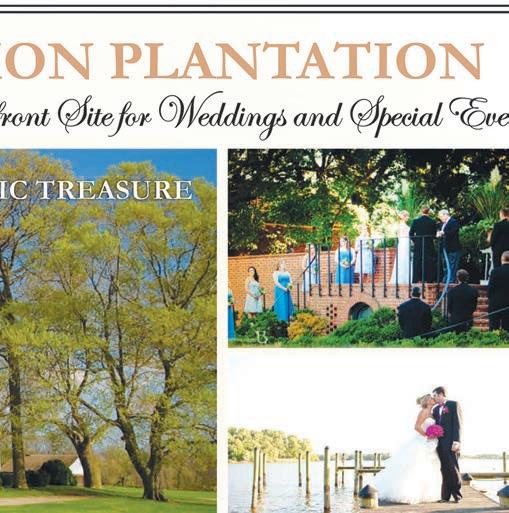

science) in 2010 won $77,000 on “Jeopardy!” a record that lasted until 2019. His six-day winning streak earned him $230,000. In 2011, he won $250,000 more in the tournament of champions. “Let’s face it, for ‘Jeopardy!,’ the name of the game is breadth not depth,” he said. “I think the main reason both universities [UD and Virginia Tech] helped so much is that they cover just about all spheres of learning in extraordinary depth.”
10 No Kum-Sok. Kum-Sok (known in America as Kenneth Rowe) was just 21 in 1953 when he defected to South Korea with a state-of-the-art Russian fighter plane. His flight to freedom, 56 days after the Korean War ended, earned him a $100,000 reward for delivering the top-secret MiG. A few months later he enrolled at UD, where he earned bachelor’s degrees in mechanical and electrical engineering. While traveling between Washington and New York, “I had seen Newark from the train and knew it was a good engineering school,” he said. “I wanted to be an engineer.”
On June 6, 2022, the University of Delaware Library acquired more than 1,850 boxes of archival records and 415 gigabytes of electronic records from Joe Biden’s Senate career.
What’s in them won’t be revealed “no sooner than … two years after the donor retires from public life,” UD says. Conservatives looking for a smoking gun in all that material prompted another digital disclaimer from UD: “No Biden designee has visited the collection since November, 2019. No documents have been added or removed by any Biden designees during any visits.”

At the beginning of the 2024-25 school year at The Independence School in Newark, Head of School Timothy Costello gave each of the school’s teachers the gift of a wand – a deferential nod to the magic of education and its ability to inspire others. Recently, Costello met with Newark Life to talk about the school’s mission, its curriculum and who inspired him.

Costello: What is beautiful about a school that serves three-year-olds through fourteen-year-olds is watching the magic making happen in developmentally appropriate ways. Intellectual risk-taking when you are four could be starting to ride the tricycle in our Funk Outdoor Classroom, but when you are thirteen, it may be trying out for the school musical. Our school rewards intellectual risk-taking.

Newark Life: Since it first opened its doors in 1978, The Independence School has been nurturing in its students something that can never be calculated by a grade, but nonetheless serves as a continual source of strength to guide them throughout their life. How does the school’s curriculum, its mission and its teachers develop the intellectual curiosity in your students?


The last three words of our mission statement are learning, leadership and citizenship and we do a remarkable job of aligning that with what is happening in the classroom. Students are encouraged to embrace a spirit of inquiry in their learning.
The Independence School. Aptly named?
You’re going to see a sense of confidence and self-advocacy here. Our students are much sought after by the area’s high schools. You can spot an Independence student at these high schools, because they are the team captains and the leaders of student government.
The Independence School not only inspires its students to achieve in the classroom but provides the building blocks for good citizenship and leadership. If a visitor were to spend a day at the school, where – and how – would they witness those building blocks being formed?



Everywhere! One of the things we do to empower our students is on display at our Opening Assembly, something that I have not seen at any other school. To honor our graduating class, after our younger grades are seated, the eighth graders are announced and enter the auditorium, taking their place in the front rows of the auditorium, the seats they will occupy for the entire year. It is very powerful.
Continued on Page 34

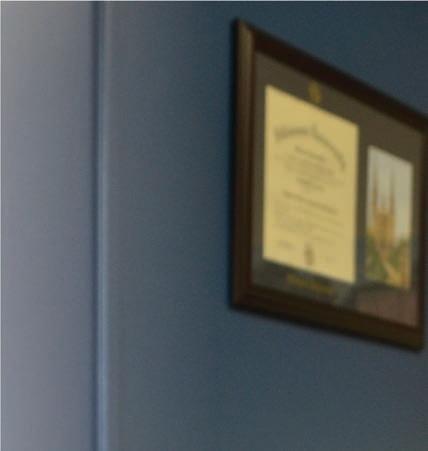








Continued from Page 32
One of the most important components that often separates a strong student from a struggling student is the great intangible that cannot be absorbed from the pages of a textbook. How does The Independence School help its students develop a sense of confidence?
An Indy student’s development of their sense of confidence stems from the intellectual risk-taking they take here. We do not celebrate mistakes, but we realize that they are a part of learning. It’s less about how smart they are but how they are smart and it is the responsibility of our teachers to understand the ways that each student learns best. A student develops a stronger sense of confidence if they know that the teacher understands how they work best rather than feeling that the classroom is a “one size fits all” environment.

Here is your opportunity to praise the teachers and the administration of The Independence School. It takes a special person to selflessly invest their energy in young people – and millions do it around the globe – but is there a singular mindset that defines an Independence School teacher and administrator?
Continued on Page 38








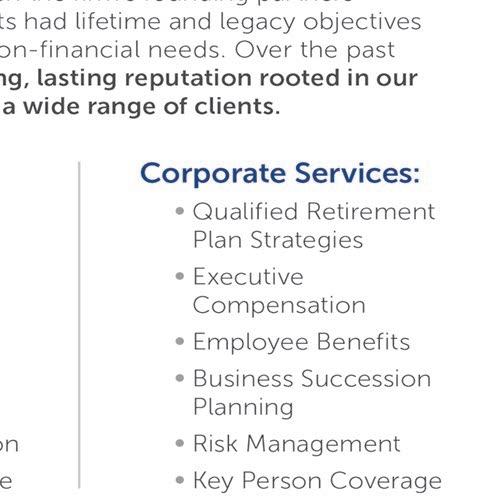




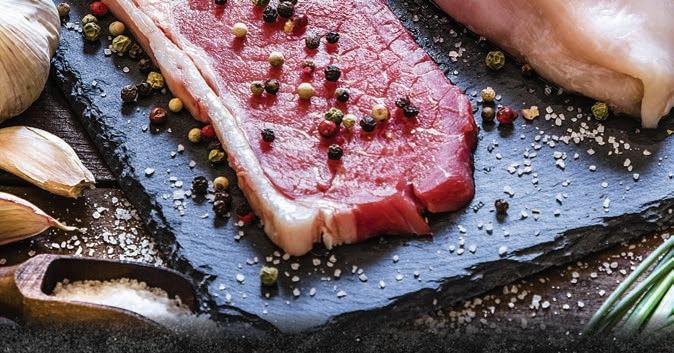







FRESH BEEF: RIBEYE, NY STRIP, TOMAHAWKS, FILET MIGNON, BRISKET, WAGYU, BURGERS, DRY AGING, DRY AGED, WHOLE OR PORTIONED
PORK CHOPS, RIBEYE, SAUSAGE, CHICKEN BREAST
FRESH & FROZEN SEAFOOD: OYSTERS, CLAMS, MUSSELS, SCALLOPS, CALAMARI, CRAB MEAT, LOBSTER TAILS, CRAB LEGS, SHRIMP, TUNA, SALMON, SWORD, MAHI, CHILEAN SEA BASS, COD, ORANGE ROUGHY, GROUPER
LAMB RACKS - DUCK BREAST & WHOLE - VEAL
ITALIAN SALUMI & MEATS: PROSCUITTO, COPPA, SOPPRESATA, GABAGOOL, PORCHETTA, SALAME, PANCETTA, MORTADELLA, CULATELLO, GUANCIALE, FINICCHIONA, MEATBALLS
FORMAGGIO / CHEESE: MOZZARELLA, PARMESAN, PECORINO, GORGONZOLA, RICOTTA, BURRATA, FONTINA, TALEGGIO, GRANA PADANO, PROVOLONE, ASIAGO, SPREADS
DIBRUNO BROTHERS PRODUCTS / FRESH LISCIO’S BREAD
GROCERY: SAUCES, OILS, VINEGARS, OLIVES, MARINATED VEGETABLES, SEASONINGS, RICES, POLENTA, FLOURS, PASTAS – FRESH / FROZEN / RAVIOLI / TALLUTO’S


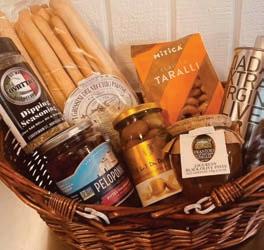




Continued from Page 34
For our incredibly dedicated faculty and staff, this is not a job. This is a calling. This is a passion. I am not the only one here who says that I don’t go to work every day, but that I go to school every day. The talent of our faculty and staff is also supported by the fact that so many have been here for a long time. There are over 20 faculty and staff who also have children at Indy. It’s the ultimate testimonial that we believe in what we do here so much that we can’t imagine our children anywhere else.
We’re preparing our children for a world that is impossible to know, but not impossible to shape, and our faculty and staff are doing the shaping. Each day, hundreds of families are dropping off their most precious gift to us, and that is a tremendous responsibility our faculty and staff hold in the highest regard.
What – or who – first inspired you to enter the world of education, and in what ways did they plant the seeds that became your vocation and is now your gift to others?
It was my eighth-grade teacher Ms. McCabe at Mother of

Languages teacher Josee Spence assists students in her classroom.
Divine Providence School in King of Prussia. I was the kid who felt like I had something witty to say that needed to be said regardless of time, place and appropriateness. Ms. McCabe would tell me “WAIT,” and it stood for: “Why Am I Talking?” It was a good reminder for the fourteen-year-old Tim. When it comes to our most impactful teachers, it’s less about what they teach us content wise but how they make us feel.
Continued on Page 40







She, in a very appropriate way, called me out on my shenanigans and helped me channel that in another way.
What has been the best advice you have received about teaching?
I remember seeing this quote outside of a classroom in my early years as a teacher, before I became a parent. It said, “Never forget that every child in your school is someone’s whole world.”
When you drive up that long driveway to The Independence School at the beginning of every day, what components of your role as Head of School do you look forward to most?
I am assuming there must be several, yes?
If I had to prioritize the responsibilities of a job description as the Head of School, it would be to “advance the mission of the school.” It is the mindset that every day is an open house at The Independence School. These families are making a conscious decision to send their children
here, to drive their children here, and pay tuition to afford an Independence School education. We need to be able to deliver on that value every day.
The other thing I think of is, how do we get more parents to make that drive, to shout from the rooftops the things that we do exceptionally well, and have more people experience those same feelings that I have driving down that driveway every day?
What is your favorite spot in Newark?
I don’t think you can go wrong with nachos at Klondike Kate’s.
You organize a dinner party and can invite anyone – living or not, famous or not. Who do you wish to see around that table?
Since this interview has been about education, I would like to invite my Mount Rushmore of Educators. The first will be Sir
Continued on Page 42




The Independence School is located on approximately 90 acres of woodland and nature areas, that includes an interactive playgrounds and outdoor classrooms.

Continued from Page 40
Ken Robinson, who was a British author, speaker and international advisor on education, who has the distinction of giving the most viewed TED Talk of all time called “Schools Kill Creativity.”
The second will be the author Jonathan Kozol, who has shone an incredible light on the horrific inequities in schools, particularly in public, innercity schools.
My third guest will be Pat Bassett, who was the president of the National Association of Independent Schools. He elevated the organization and the benefits of independent schools and ways that they can become more affordable. My last guest will be John Dewey, the father of progressive education.
What food or beverage can always be found in your refrigerator?
Hot sauce! I am a hot sauce fan. It just makes everything taste better.

The Independence School is located at 1300 Paper Mill Road, Newark, Del. 19711. To learn more, visit www.theindependenceschool.org.
~ Richard L. Gaw
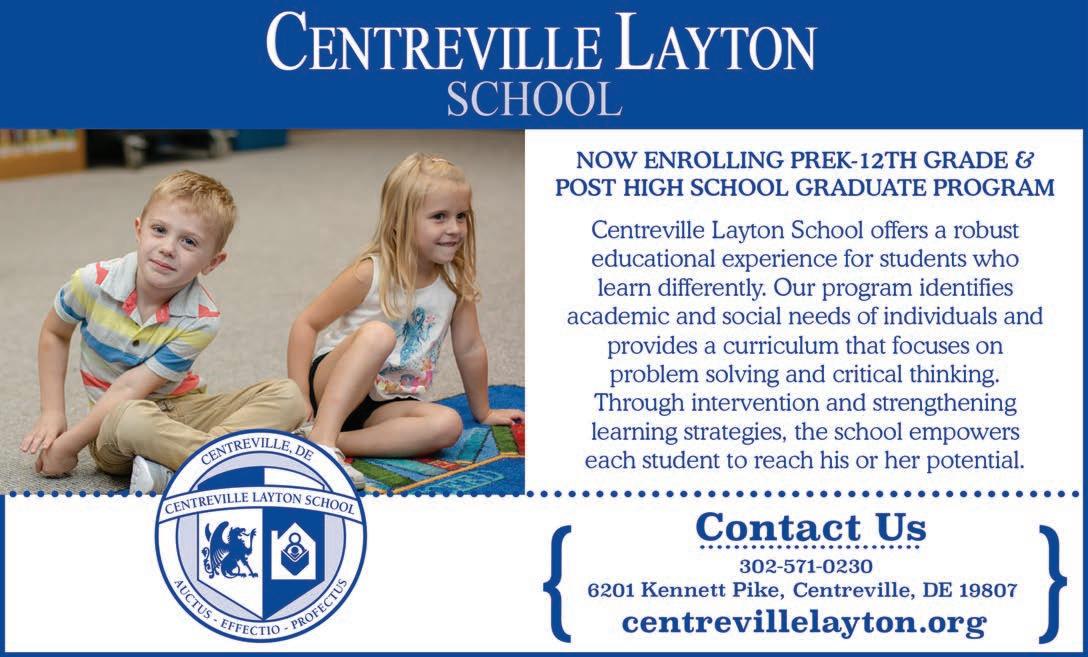



Fall Community Clean Up
Saturday, October 12 | 9AM-11AM
City of Newark Municipal Building
Halloween Party
Thursday, October 24 | 4PM-5:30PM
George Wilson Center
Halloween Parade & Trick or Treat
Saturday, October 27 | 3PM-5PM
Downtown Main Street
Turkey Trot
Saturday, November 23 | 9AM-11:30AM
Handloff Park
37th Annual Thanksgiving Day Breakfast
Thursday, November 28 | 8AM-10:30AM
George Wilson Center
Winterfest
Friday, December 6 | 6PM-8PM
Academy Building Lawn
Santa’s Secret Workshop
Saturday, December 7 | 9AM-12PM
George Wilson Center
Snack with Santa
Saturday, December 7 | 9AM-11:30AM
George Wilson Center



By Ken Mammarella
Contributing Writer
Wendy K. Smith, a management professor at the University of Delaware’s Alfred Lerner College of Business and Economics and co-founder and faculty director of its Women’s Leadership Initiative, has 10 awards hanging on the walls of her small office in Lerner Hall in Newark.
An 11th, the Breakthrough Idea Award from Thinkers50, is still on her desk, several months after she and Marianne W. Lewis, dean of the University of Cincinnati’s Lindner School of Business, earned it for their research on business and life paradoxes. Their research was also popularized in Both/ And Thinking: Embracing Creative Tensions to Solve Your Toughest Problems, a lively and approachable 2022 book with an informative companion website, bothandthinking.net.
cal about organizations and people in them, and we need to spend more time focused on that.
“When I accepted the award, I was a little bit cheeky. I said I believe this is not a breakthrough idea. The breakthrough here is making sure that we recognize this kind of paradoxical notion within the context of organizations: the idea that there are opposing tensions intertwined, and if we pay attention to that, we change the way we solve problems in our personal lives but also in our global world.

“We change the way we think about political polarization. We change the way we address issues like climate change. I passionately believe that we need to rethink how we approach the world to be much more interdependent in our opposition to how the engineer and the artist can come together.”
The award acknowledged “the work we have done both through the book but also more broadly in the academic community,” she said. “There’s something deeply paradoxi-
That breakthrough comes from someone whose Judaism espouses multiple viewpoints; who has a photo of her hugging a Buddha on the wall; who sent her kids to Quaker school; who has lived outside the U.S. for four years; who
Continued on Page 48
Mammarella photo For the last five years, University of Delaware management professor Wendy K. Smith has been in the top one percent of academics worldwide in writing papers that have been cited by others.

Continued from Page 47
has an interdisciplinary curiosity that led to academic degrees in political science, psychology and organizational behavior; and who by the end of the first chapter of “Both/ And” has mentioned Barack Obama, John McCain, retired W.L. Gore CEO Terri Kelly, Carl Jung, Lao Tzu, Ben and Jerry’s founders Ben Cohen and Jerry Greenfield, Heraclitus and Albert Einstein.
Dr. Wendy Smith is someone who does not think in an either/or way.
Here’s an impressive statistic to back up the importance of her work. Every year for the last five years, she has been in the top one percent of academics worldwide in writing papers that have been cited by others, according to the Institute for Scientific Information at Clarivate.
The annual honor for being a highly cited researcher, by definition, is rare. And with being on the list for five years straight, Smith is in elite company at UD. Yushan Yan –a chemical and biomolecular engineering professor and director of the Center for Clean Hydrogen – has, like Smith, been in the top one percent for the last five years. Cathy Wu, an engineering and computer science professor, was in the top one percent for seven consecutive years, 2014-20, according to UD.
Smith was a teenager when she first lived abroad (four months in China), and she enhanced that worldliness with two years at a yeshiva in Israel, plus sabbaticals in Cambridge, England, and Sydney, Australia. One principle


of Jonas Legarth/Thinkers50 Smith in 2023 received the Breakthrough Idea Award from Thinkers50 for “a radical idea that has the potential to permanently change the way we think about business,” the University of Delaware said. The idea focuses on paradox – in business and life.
instilled young is called elu v’elu, which translates to “these and these.”
“The sensibility of elu v’elu pervades Jewish life, ensuring variety, diversity and creativity,” according to the Lippman Kanfer Foundation for Living Torah. “Making room for multiple viewpoints improves solutions and fosters better relationships. There is a lot to be said for agreeing to disagree.”
She earned her bachelor’s degrees from Yale and her master’s and doctorate from Harvard, with a dissertation titled “Managing Strategic Contradictions.” She was hired by University of Delaware in 2006, after her husband, Michael A. Posner, was hired at Villanova. Smith and Posner live in Philadelphia with their twins, Jonah and Yael, their son, Ari and their cockapoo.
“Raising twins is the ultimate in paradoxical thinking,” she said, “because you have to learn how to value them as individuals while exploring what their relationship unto itself is like and what that duality looks like for their twin-ness. And it led to decisions like they each needed to be in their own school, starting in sixth grade.”
“Wendy is exceptionally creative, thoughtful and integrative – a true model of both/and thinking,” Lewis said. “I treasure our collaboration, and her ability to tap into her own paradoxes. Wendy is a rigorous and renowned theorist, yet humble and curious in exploring real life issues. Our best ideas emerge through conversation. Volleying ideas back and forth we generate new insight into organizations, as well as novel approaches to our own personal and leadership challenges.”









Continued from Page 48

The first graphic for “Both/And” is Kelly Blair’s cover design, which appears to be just two green and orange dots and two enigmatic squiggles. Smith challenged this writer to delve deeper, and he proffered a few lame ideas. It could be a deconstructed yin and yang, she said, and it could be a W (for Wendy) entwined with an M (for Marianne). And it could also be what you want it to be.
The first graphic inside the book is the age-old yin and yang symbols.
“The core idea that I study is this notion of paradox, this notion that there are things that are opposition to one another, but they’re also interdependent and the way that they are persistent,” she said. “They’re sort of yin and yang, black and white, right and wrong, but it’s not black and white, and it’s not a mushy gray. It’s a dynamic, interdependent relationship between opposites.”
Continued on Page 52










Continued from Page 50


The paradox research that Smith has done is highlighted with this graphic early in “Both/And Thinking: Embracing Creative Tensions to Solve Your Toughest Problems.”
“We in the social and organizational world are kind of late to the paradox party,” she told UDaily, when it reported that the Academy of Management Review gave its Decade Award to Smith and Lewis’ 2011 paper, “Toward a Theory of Paradox: A Dynamic Equilibrium Model of Organizing.”
The award honors the AMR paper with the greatest impact on research over the previous 10 years.
When considering divvying up finite resources, like a pie, it’s a management cliché to consider the inherent limits of the scenario. She, Lewis and Michael L. Tushman offer another view in the Harvard Business Review: “Rather than seeking to slice the pie thinner, people with [a] valuecreating mindset pursue strategies to grow the pie, such as exploring collaborations with new partners, using alternative technologies or adopting more-flexible time frames for shifting resources for better use.”
Continued on Page 54


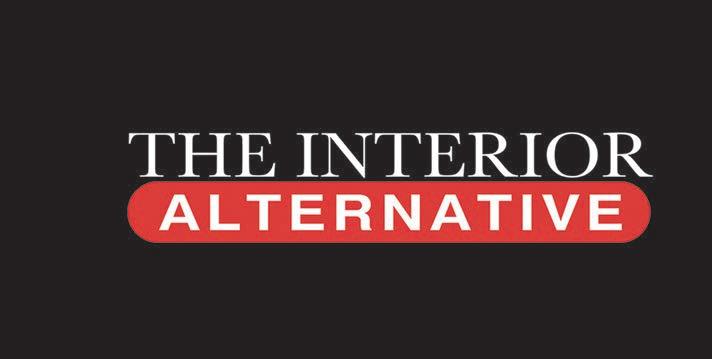



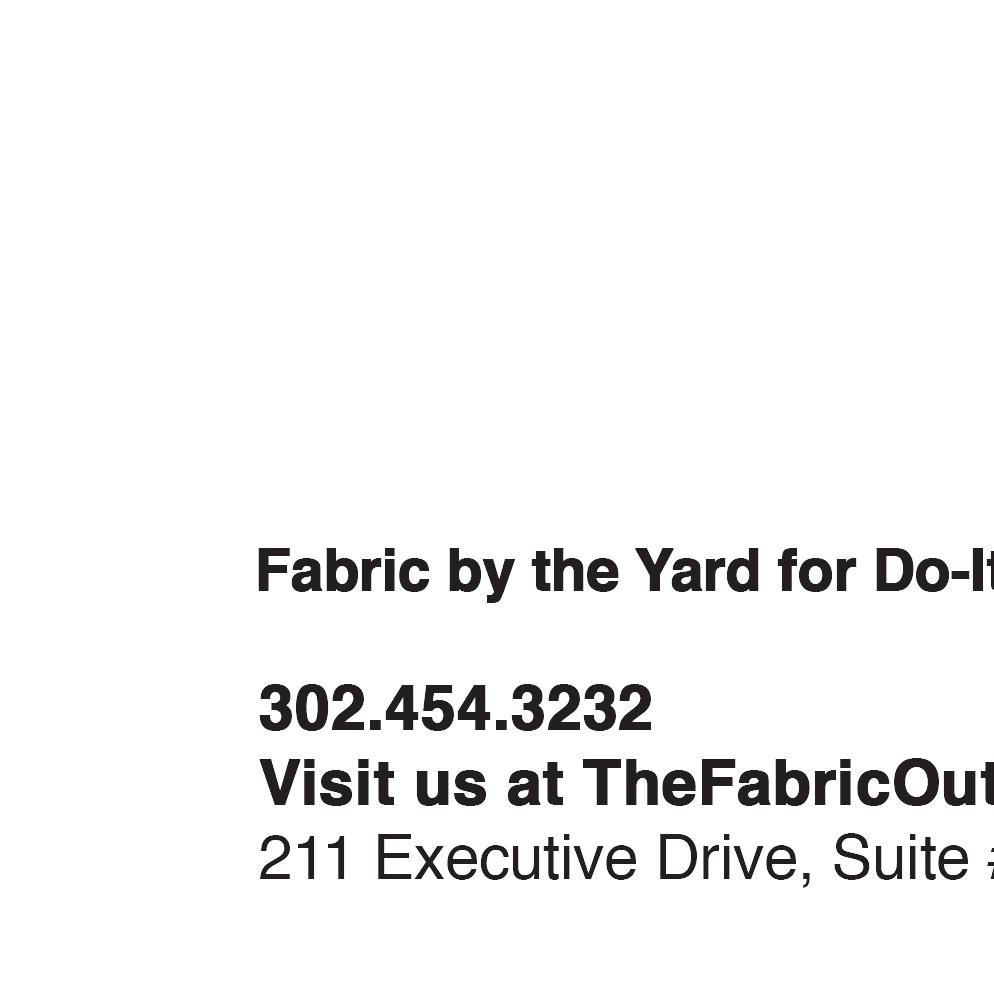









Continued from Page 52
And in “Both/And,” Smith and Lewis think further outside the pizza box. What if the split involved a vegan carbaholic and someone who loved only the sauce, cheese and toppings? When they split the pie, they each believe they are getting the whole thing.
“In this approach, we move from thinking about resources as unidimensional (i.e., the slice of pizza) to consider other dimensions (i.e., our preferences for the different aspects of the pie,” the book said.
When asked near the end of the interview what she wanted readers to know, Smith made two points.
First, Lerner has a “robust” tradition of research. Second, as for her own research, mentorships, keynotes, consultations, conferences, workshops and outreach, she has a simple goal and a simple question: “The goal is to shift people’s mindsets and to shift the way people and our world navigate problems.” The question: “How do we teach the next generation to be in conversation with one another across very different points of view?”
Continued on Page 56

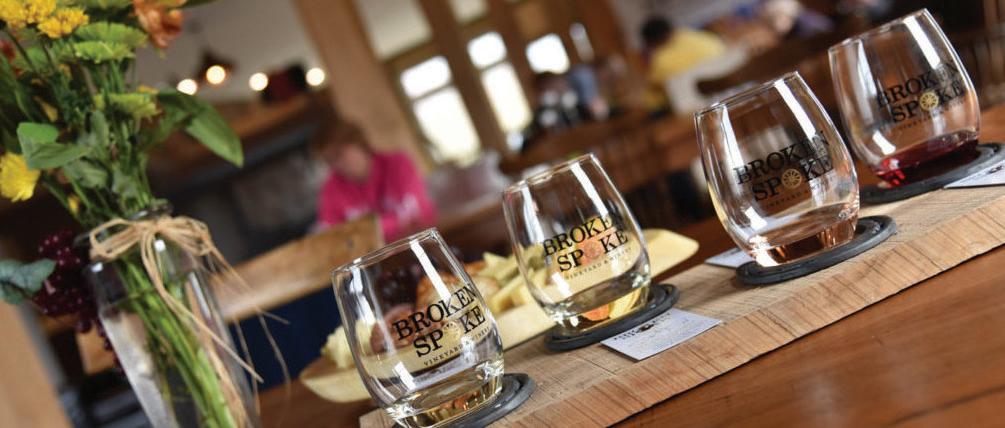


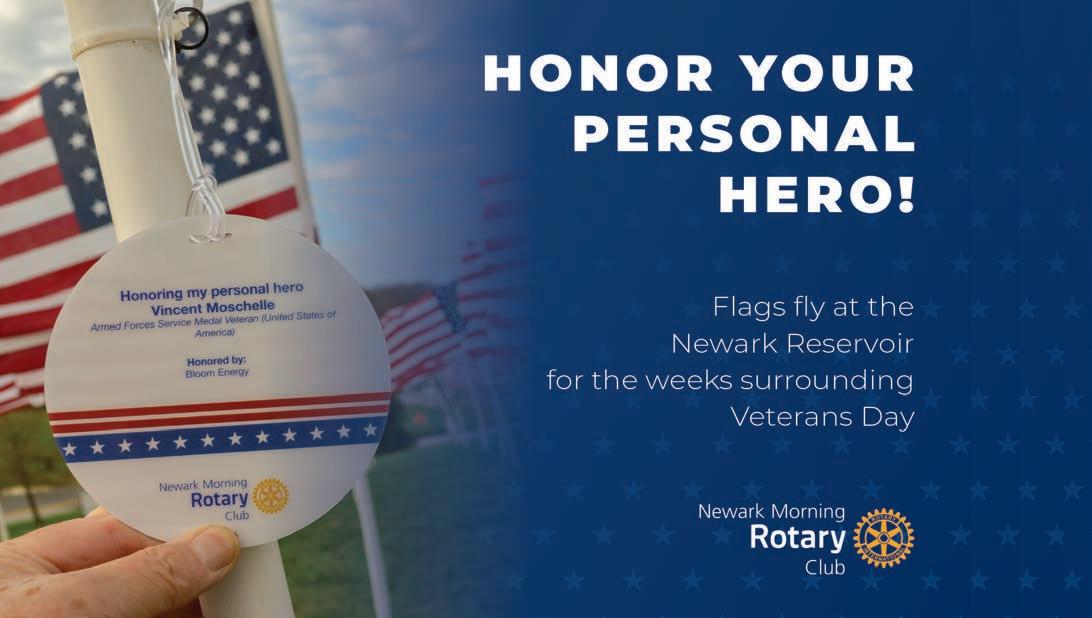







Wendy Smith
Continued from Page 54
Thoughts from Yael Smith Posner, one of Wendy K. Smith’s children, on both/and thinking.
Both/and thinking is anywhere that decisions are being made in my family – and very much ingrained within my own thinking. Before the book had its title, I remember my mom calling this “find option C.” When given an either/or choice that feels really trapping, what else can you do? My
mom was always my go-to-friend-group-dynamic-problemsolver. I would say “Mom, I think I either need to break up with this friend or deal with all their problems and I don’t want to do either.” My mom would say something like “If this friendship is important to, you can both keep your friendship and set boundaries to avoid being pulled into all their problems.” That was the option C approach that now we call both/and thinking.


It seems almost crazy to me to approach a problem and think “Well it’s this or that, I win or I lose.” For example, if I win a game of Settlers of Catan (which I rarely do) my excitement cannot negate my good sportsmanship and definitely doesn’t excuse me from helping clean up afterwards. That is a way that both/and thinking plays a small role in my life. But it affects much more than my winning or losing. It affects how I think too, not just around my mom but in my own life.
This summer, I was a counselor at a sleep-away camp. Both/and thinking came up all the time. How do we both provide the campers with a fun summer and keep them safe and healthy? How do we talk to camp directors about their policies that accommodate both the community comfort and individual freedom? It is because of my mom that I can lean into really challenging conversations and tackle issues both compromising on a productive outcome and staying

true to my values.
As another example, this thinking has guided recent conversations as I prepare to apply for college. My parents ask me how they can both support me when I want and need, and offer me independence and autonomy in this big life decision. The language of both/and thinking has helped me in school too. In my essay for philosophy class, I looked at how we can both honor the thinking of old white male philosophers and make space for minority voices.
My mom is a badass (if I’m allowed to say that). While most people know her as a professional, poised, thoughtful and widely cited and accomplished speaker, writer and storyteller, I get the privilege of knowing her as mom. I am so grateful for the ways she has shaped the way that I think and approach decisions from conflicts as light as winning or losing a game of Catan to how I engage in challenging conversations and decisions.


For the past 20 years, PAWS for People in Newark has been committed to providing therapeutic visits to people and communities who benefit from interaction with a well-trained, loving pet. For those on the receiving end of this gift, the results have been transforming



Gabbie Burton



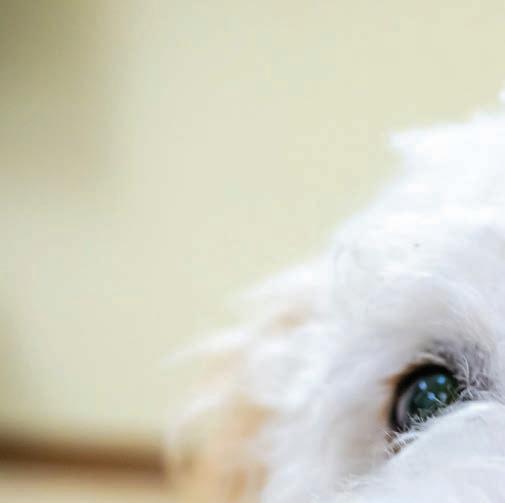
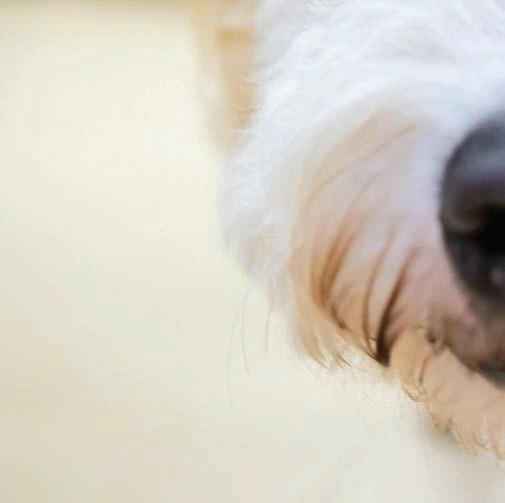




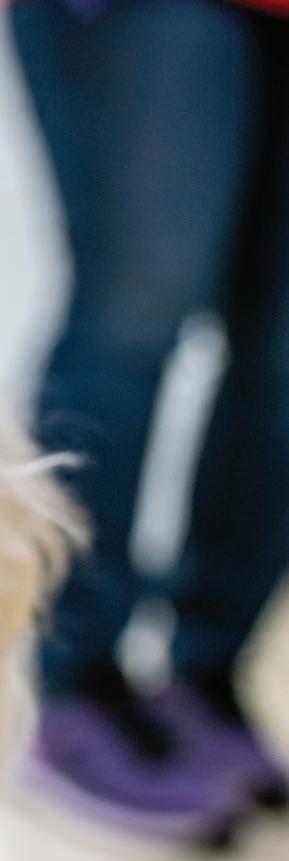




Continued from Page 58
Anyone with a pet can attest to the fact that animals provide a source of comfort and happiness
Since 2005, PAWS for People in Newark has been offering that unique comfort through the science and the art of pet therapy.
PAWS (Pet Assistant Visitation Volunteer Services) provides therapeutic visits in Newark and the surrounding areas through the compassion and commitment of nearly 500 volunteers who bring in their own dogs, cats, and bunnies for training to ensure appropriate and safe behaviors on site visits.
Continued on Page 62
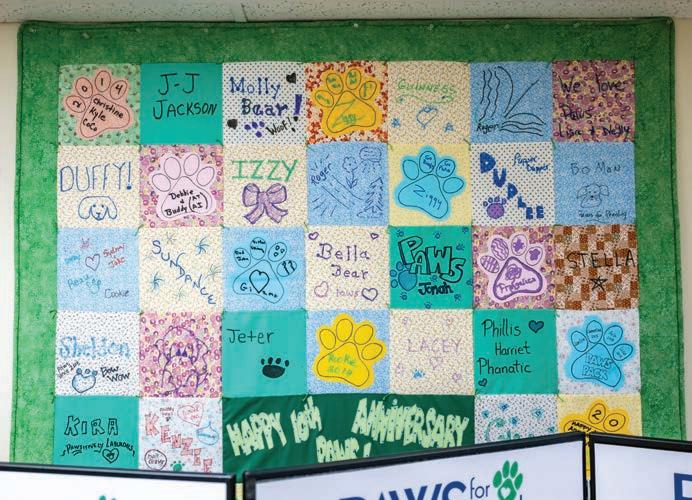

“The benefits of pet therapy go beyond just an emotional connection, and anybody who has ever had a pet or interacted with a pet knows from that experience that there are physiologically positive effects.”
-Kate
Rosenthal, manager of marketing and events



After the two-stage training process is complete, volunteers make site visits

The work of PAWS for People can be seen at nursing homes, hospitals, libraries, businesses, schools and to anywhere or anyone else who may need it. Though visits often include groups settings, PAWS prioritizes the individual experience with the pet.
beyond just an emotional connection, and anybody who has ever had a pet or interacted with a pet knows from that experience that there are physiologically positive effects,” said Kate Rosenthal, manager of marketing and events. Petting a pet reduces the levels of cortisol in your body, it lowers your blood pressure, it releases endorphins, so you have that emotional response, but it does literally have a physiological calming effect on the person who interacts with the pet.
“The pet can be a bridge or a conduit to help them express something that is allows them to calm down. That kind of interaction takes their guard down, puts them in a calmer space and enables them to connect on a deeper level.”
PAWS for People is located at 703 Dawson Drive, Newark, Del. 19713. To learn more or request a pet, visit www.pawsforpeople.org or call (302) 351-5622. Continued from Page 61








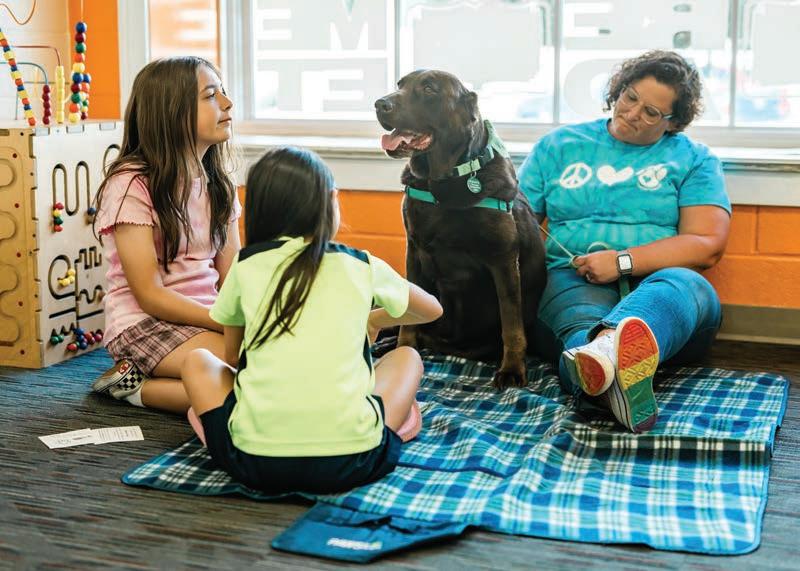




By HaLeigh Abbott Contributing Writer
Cooling air and changing leaves are nature’s way of reminding us that it’s time to slow down and appreciate the fall before the winter reset comes through. Newark has a great mix of events, even some spooky ones, to suit every Autumn enthusiast.
Grab your family, friends, coworkers, neighbors and help keep Newark beautiful. Join in at the City of Newark Municipal Building on Saturday, Oct. 12 from 9 a.m. to 11 a.m. Individuals and volunteer groups are welcome. Gloves and trash bags will be provided. For additional information or to volunteer for the clean-up, please call the recreation office at 302-366-7000 or email parksvolunteers@newark.de.us.



On Wednesday, Oct. 23, from 6 p.m. to 9 p.m., join in for an unforgettable evening at the Ultimate Tailgate, where the best of New Castle County’s culinary talent comes together to delight your tastebuds. Savor creative tailgate bites from your favorite local restaurants and food trucks, all within the beautiful tented indooroutdoor space at The Grove at Delaware Park. Find out more by visiting mealsonwheelsde.org.
What Awaits You:
Gourmet Tailgate Bites: Indulge in a variety of delicious offerings crafted by top local chefs and food trucks.




Craft Beer Trail: Enjoy a selection of craft beers curated by the 2SP Group, perfect for beer enthusiasts.
Wine & Cocktails: Sip on an assortment of fine wines and expertly mixed cocktails.
Live Entertainment: Groove to live music that will keep the energy high and the fun flowing.
Exciting Auction: Participate in our beer and sportsthemed auction and take home unique prizes.

It’s time for our annual Halloween Costume Party at the George Wilson Center. Join in for special Halloween crafts and activities, sweet refreshments, spooky storytelling, a mysterious costume contest and even a scary room to enter if you dare. Come on out for a ghostly good time and a lot of fun! Pre-registration is available but not required, pay $5 at the door.


Newark’s annual Halloween parade will begin at 3 p.m. at Tyre Avenue and Main Street and marches west on Main Street, to College Avenue. Spectators are welcome to come watch the floats and groups by local businesses, clubs and groups. Trick or Treat Main Street will also run from 4 p.m. to 5:30 p.m. with goodies from businesses for all the ghosts and ghouls. Take a picture in the Pumpkin Patch and enjoy Main Street as it is shut down for foot traffic.
Continued on Page 66




Continued from Page 65



The 6th Annual Veterans Ball is almost here! This event is open to the public and is intended to honor and celebrate all U.S. service members of the past, future, and present.

The mission is to support U.S. service members, veterans, and ROTC cadets attending the University of Delaware (Blue Hen Veterans) to achieve their educational goals by connecting with the Delaware community and recognizing community leadership and service.
Location: University of Delaware, Clayton Hall
100 David Hollowell Drive, Newark, Del. 19716
Dress Code: Black Tie Optional or Military Service Dress
Email BlueHenVets@gmail.com or reach out to the Blue Hen Veterans and Friends for tickets.

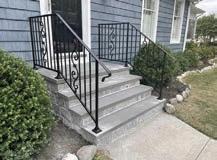
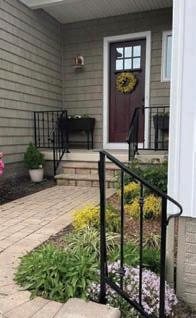


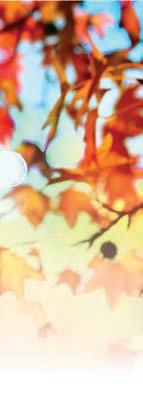
Your registration will go to sponsor wreaths being donated to the Delaware Veterans Memorial Cemetery in Bear, Del. with Wreaths Across America. Every year, wreaths for veterans are placed at various veteran cemeteries across the country with Wreaths Across America. This organization is only able to bring the number of wreaths that were donated to that location. Queens for Vets group was formed in January 2024 as a 3-for2 group, meaning for every 2 wreaths donated, the
Continued on Page 68

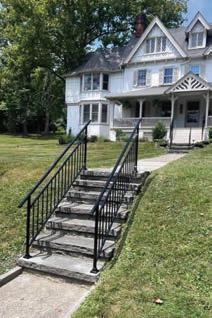






Continued from Page 66



organization will provide one free. Last year, 6,800 wreaths were distributed to this location where more than 17,000 veterans are laid to rest, but this year the goal is to see that number of donated wreaths make a significant rise. Find out more at runsignup.com/Race/ DE/Newark/ARunToRememberDE.
Runners will receive:
- Post-race snacks
- Race SWAG
~ Awards & age groups:
~ Overall male/female
~ Overall Masters Male/Female
~ Top 3 in each age group male/female - medals for 13 & under, 14-19, 20-29, 30-39, 40-49, 50-59, 60-69, 70+
~ Overall and Masters - based on gun time
~ Age groups - based off chip time




Find truly unique and special gifts for your holiday giving season at the Handmade Holiday Bazaar. Hosted by Watts Workshop, vendors of all types will be selling their goods and wares, all made with love. Discover local artisans and handmade treasures… and treat yourself to something special while you’re there too! Find out more on the FaceBook page at facebook.com/LookWattsNew.







